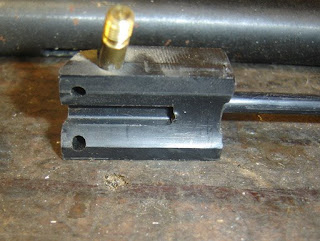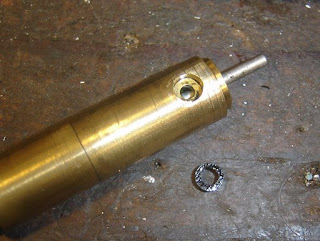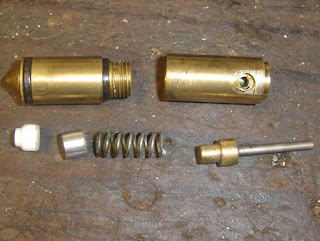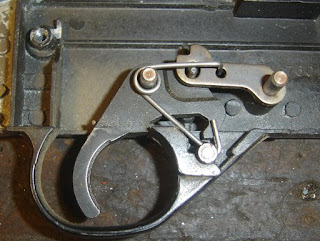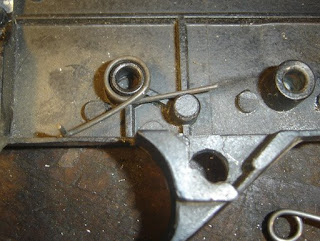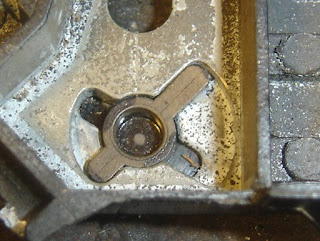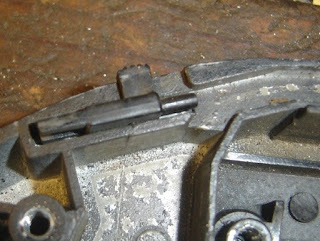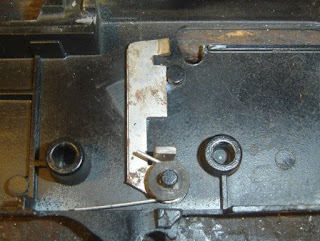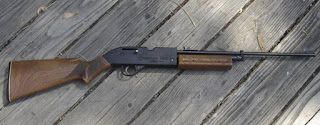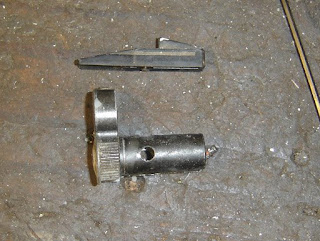I should probably pause and mention that since Crosman owns Benjamin, I tend to use the two names interchangeably. And, please excuse the lack of comprehensive photos. I only had time for a few pics.
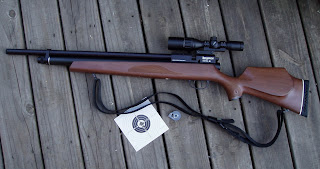
Some quick initial impressions: Filling the gun from almost zero to 2800 psi was a chore--to put it kindly. (The gun ships with just a few psi in the reservoir to hold the seals in place.) It was hotter than Hades and almost 100% humidity the night I got the rifle. I lost count of pump strokes, but there must have been a couple hundred. I took about 3 (Ok, maybe 5) breaks. I really wanted to lie on the basement's cool tile floor and wish for a scuba tank. Somewhere along the way, I rather quickly surmised that I'd made a tactical error: My initial plan to shoot the gun primarily on CO2 and occasionally on compressed air had a serious flaw.
The good news was that the pump force doesn't really increase much after about 1000 psi, it just took a while to get the gun filled. The Benjamin pump is a serious piece of hardware.
Note: You need only fill the gun once from zero. Top offs involve about 45 to 50 pump strokes and are not a problem. I've been topping the gun off every 40 shots. I should probably mention that I'm 39 and in OK shape...

This is 20 shots. The pellets kept going through the center. Just shy of 10 whopping meters. Hey, stop snickering. At least it was off-hand. I did mention the off-hand part, right? Anyway, the gun is absolutely motionless as it fires--like a 1o meter match rifle. Except, it's spitting .22 caliber pellets out over 900 feet per second. Once sighted, a hole just appears at the cross hair intersection. Then, rack the bolt and do it again 9 more times.
The gun is shrouded. It's pretty quiet. I've no basis for PCP noise comparison. The striker spring makes a weird "poiiiing" sound. That's about all you hear. The pellet impact is loud in comparison to the rifle's discharge noise.
Update: OK, I was at the Pyramyd Air moving sale. I DO have basis for comparison. Several unshrouded PCP rifles were fired (no pellets loaded) and they sounded like a .22 short. There is no way I'd shoot an unshrouded PCP without some hearing protection.

Pulled the closest scope (off another gun) that I could find. Happened to be a Leapers 6X "Bug Buster". Needed the offset mount because the compact scope has supremely short tube sections and the Marauder has a loading gate for the 10-shot magazine. Anyway, a "normal" looking scope will fit right on using a set of 2-piece rings. The gun has an integral 11mm dovetail. I think I want a 4-16X Centerpoint scope for the gun. I've got 2 now on other guns and it's a tough scope to beat for the money. A wide, useful power range allowing relatively quick snap shots in the woods as well as enough magnification to reach out on long sitting shots. Then, I think I want to keep it light with something like the 6X Bug Buster. If I was going to carry the rifle in the woods, scope weight would become the deciding factor.

Pressure gauge on the gun seems to agree exactly with the gauge on the hand pump.

Quick-fill Foster fitting.

I dropped the second stage of the trigger pull weight down to a couple ounces. The trigger in this gun makes me think Crosman fired their attorney. The trigger, to me, was the biggest revelation in this rifle. It's really impressive.
Wishes/changes/options would involve some seriously ridiculous nitpicking. This gun would be devastating in a .25 cal. There's enough power to make that a real contender of a caliber here. Of course it would be cool if the new adjustable Challenger stock fits, too. Oh, yeah, there is one thing. The gun should come standard with at least 3 magazines.



